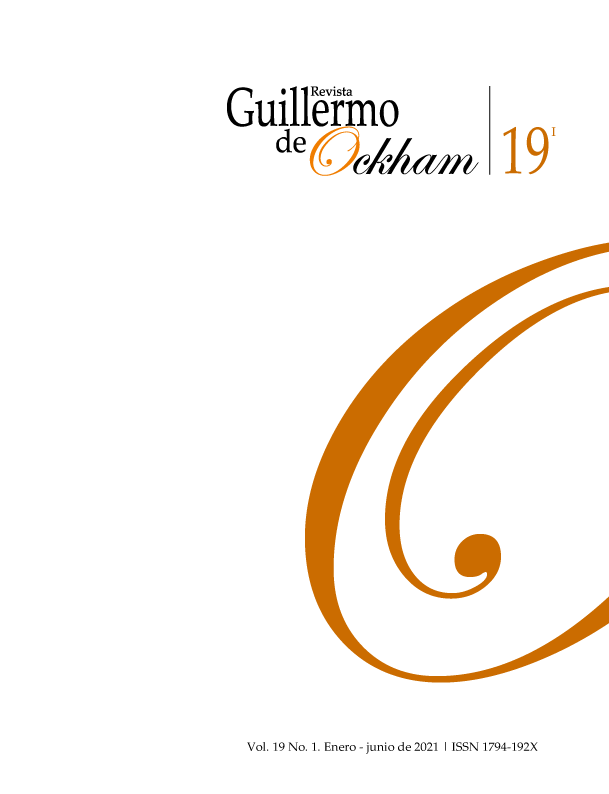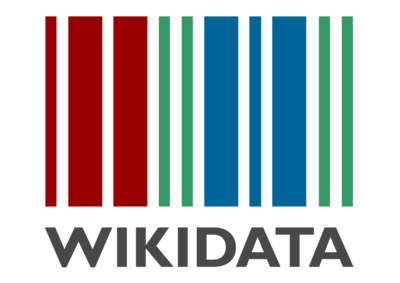The Revista Guillermo de Ockham provides an immediate and open access to its content, based on the principle of offering the public a free access to investigations to provide a global interchange of knowledge.
Unless otherwise established, the contents of this journal has a license with Creative Commons Attribution-NonCommercial-NoDerivatives 4.0 International (CC BY-NC-ND 4.0) http://creativecommons.org/licenses/by-nc-nd/4.0/
- Attribution: You must give appropriate credit, provide a link to the license, and indicate if changes were made. You may do so in any reasonable manner, but not in any way that suggests the licensor endorses you or your use.
- NonCommercial: You may not use the material for commercial purposes.
- NoDerivatives: If you remix, transform, or build upon the material, you may not distribute the modified material.
- No additional restrictions: You may not apply legal terms or technological measures that legally restrict others from doing anything the license permits.
Keywords:
References
Alzate-Pamplona, Fraidy-Alonso. (2020). Decisiones económicas en los cambios hormonales de la mujer. Cali: Editorial Bonaventuriana. https://doi.org/10.21500/EB.9789588474915
Arslan, R. C., Schilling, K. M., Gerlach, T. M., & Penke, L. (2018). Using 26,000 diary entries to show ovulatory changes in sexual desire and behavior. Journal of Personality and Social Psychology.
Beltz, A. M., & Moser, J. S. (2019). Ovarian hormones: a long overlooked but critical contributor to cognitive brain structures and function. Ann NY Acad Sci.
Davis, K. B. (1926). Periodicity of Sex Desire: Part I. Unmarried Women, College Graduates. American Journal of Obstetrics and Gynecology, 12(6), 824-838.
Galindo, O. (2020). Consumo conspicuo y conducta prosocial como rasgos costosos: una lectura evolucionista del papel de las hormonas sexuales. [Tesis de doctorado no publicada]. Universidad de los Andes, Bogotá, Colombia.
Gangestad, S. W., & Thornhill, R. (2008). Human oestrus. Proceedings of the Royal Society B: Biological Sciences, 275(1638), 991-1000.
Gangestad, S. W., Haselton, M. G., Welling, L. L., Gildersleeve, K., Pillsworth, E. G., Burriss, R. P.& Puts, D. A. (2016). How valid are assessments of conception probability in ovulatory cycle research? Evaluations, recommendations, and theoretical implications. Evolution and Human Behavior, 37(2), 85-96.
Haselton, M.G., Mortezaie, M., Pillsworth, E.G., Bleske-Rechek, A., & Frederick, D.A. (2007). Ovulatory shifts in human female ornamentation: near Hormones and Behavior 51, 40–5.
Lucas, M. M., Koff, E., & Skeath, S. (2007). Pilot study of relationship between fertility risk and bargaining. Psychological reports, 101(1), 302-310.
Roney, J. R. (2018). Functional roles of gonadal hormones in human pair bonding and sexuality.
Routledge international handbook of social neuroendocrinology, 239-255.
Sommer, B. (1992). Cognitive performance and the menstrual cycle. In Cognition and the menstrual cycle (pp. 39-66). Springer, New York, NY.
Wilcox, R. R. (2011). Introduction to robust estimation and hypothesis testing. Academic press.

 Perfil Google Scholar
Perfil Google Scholar































